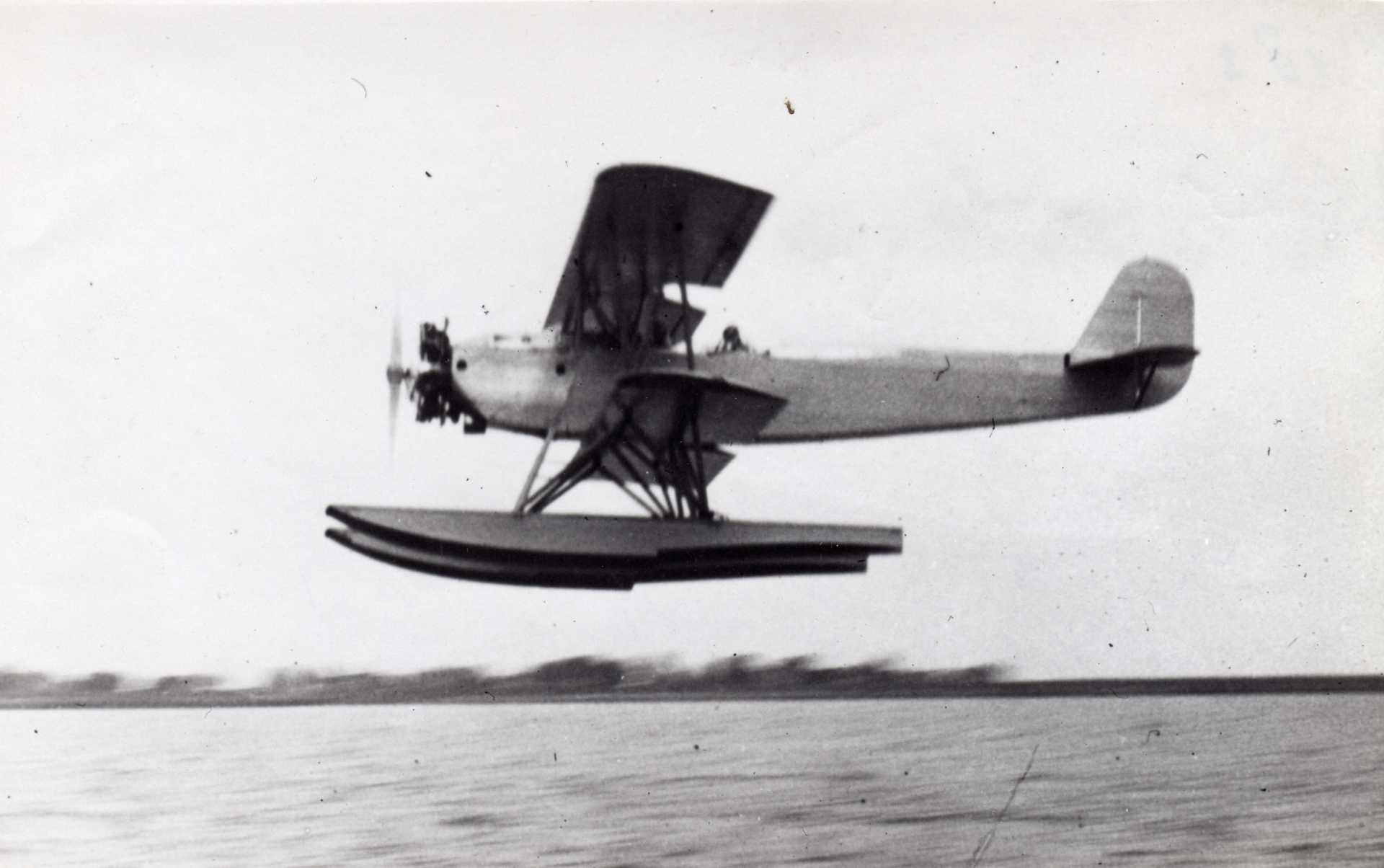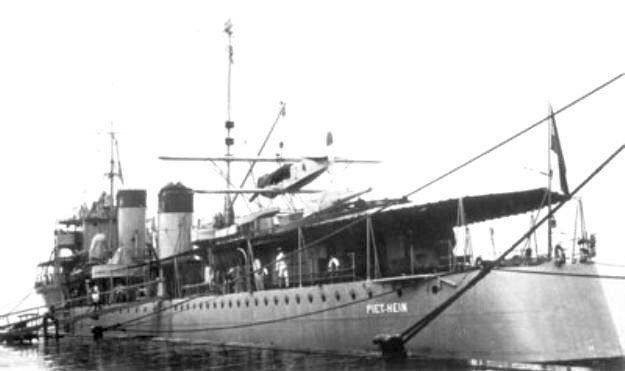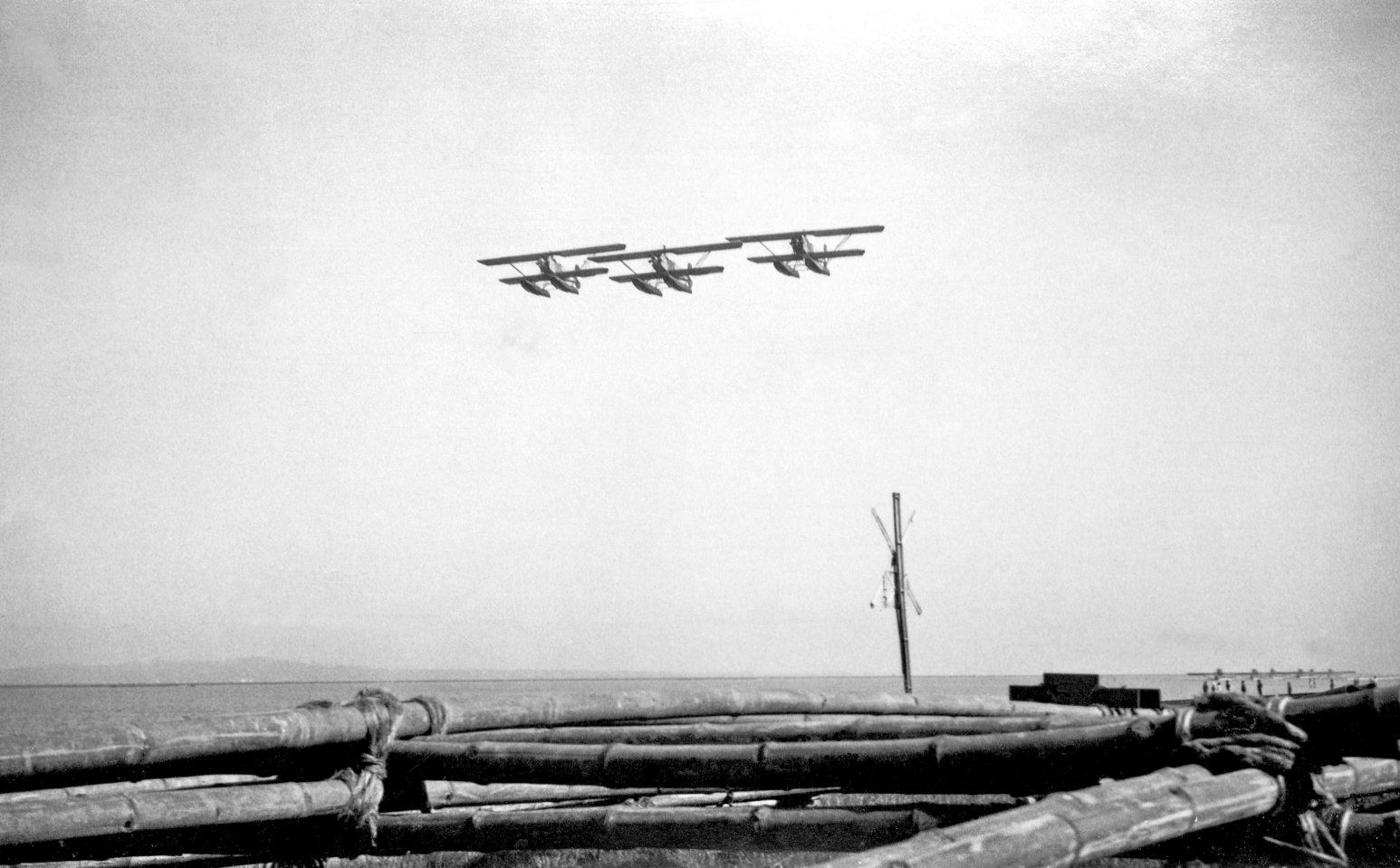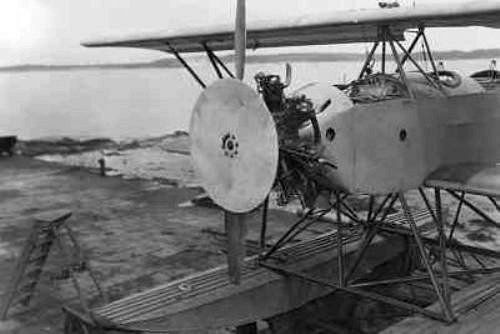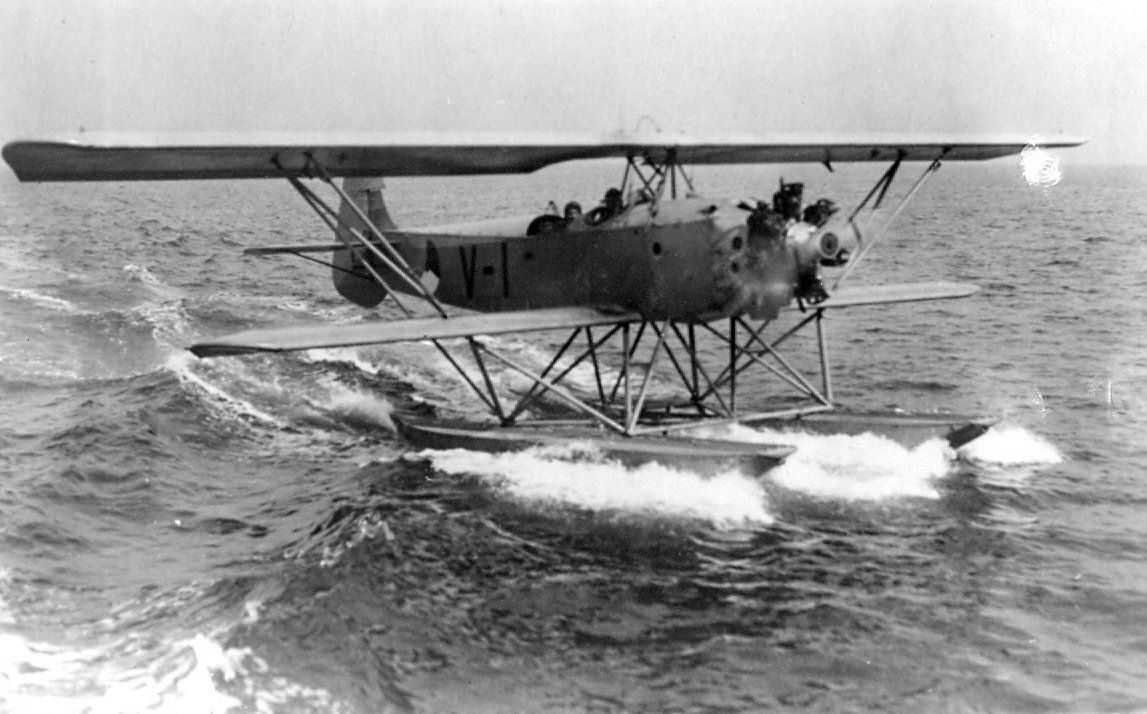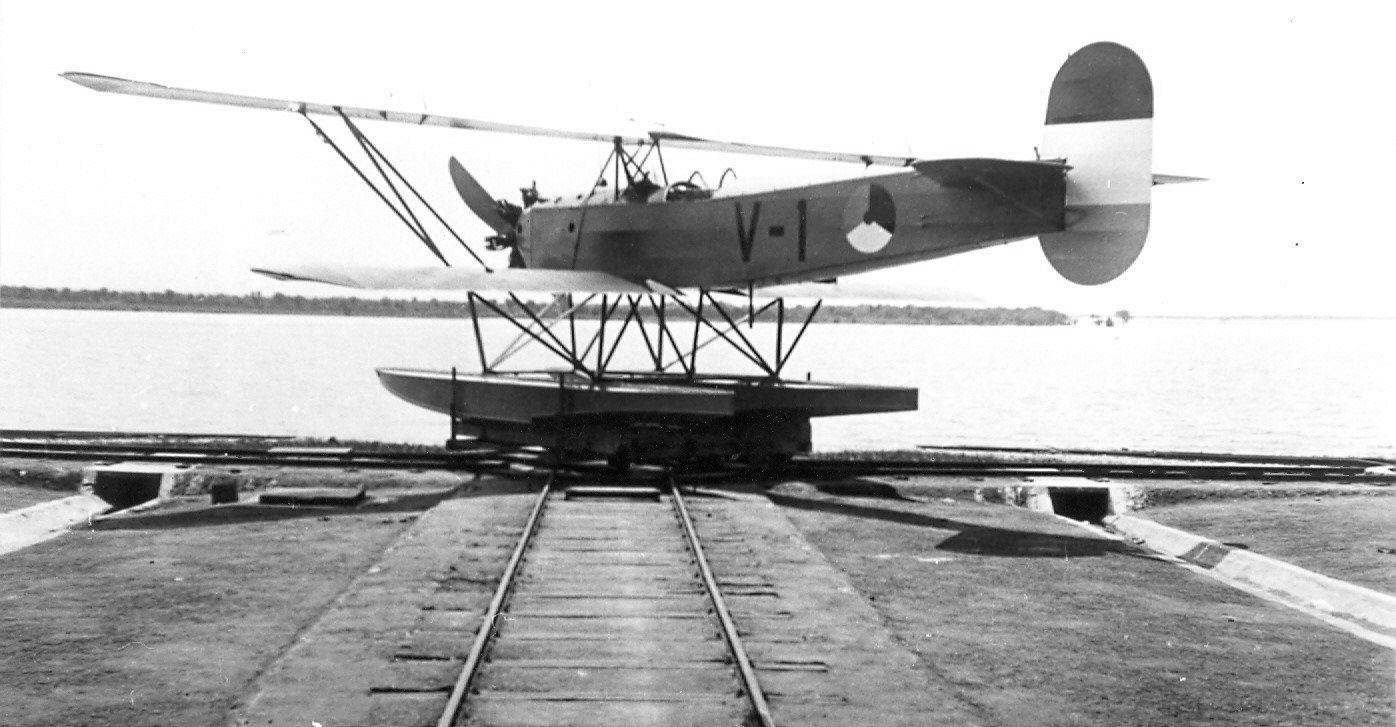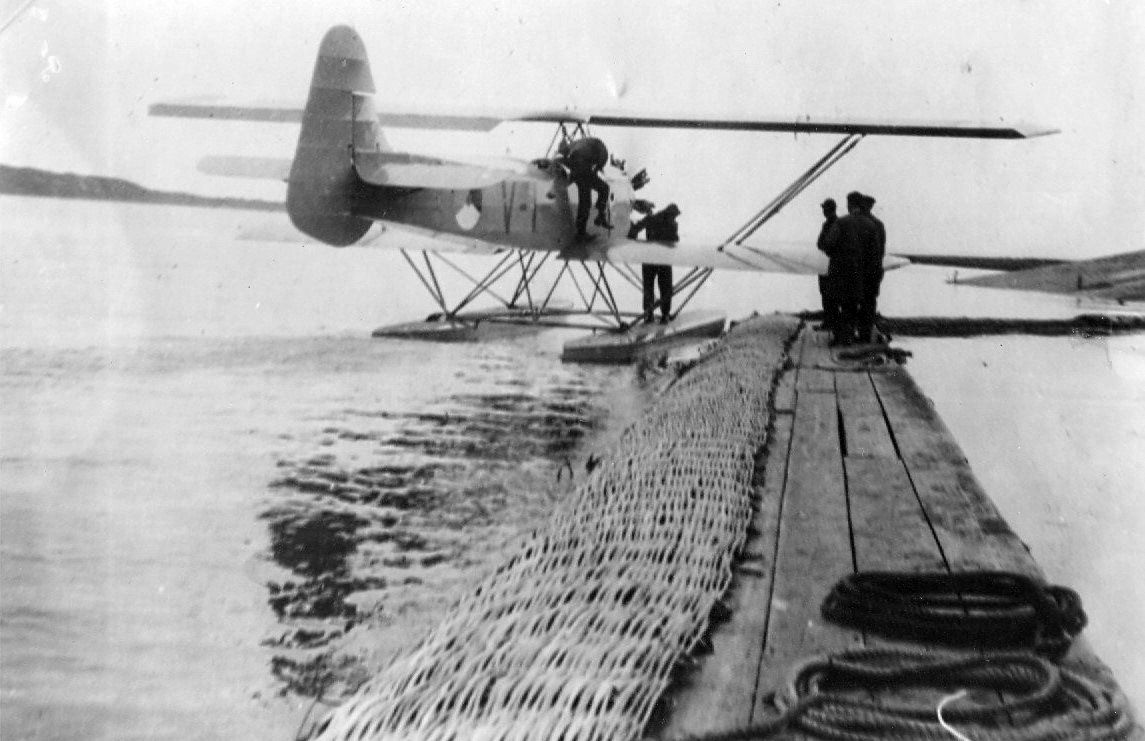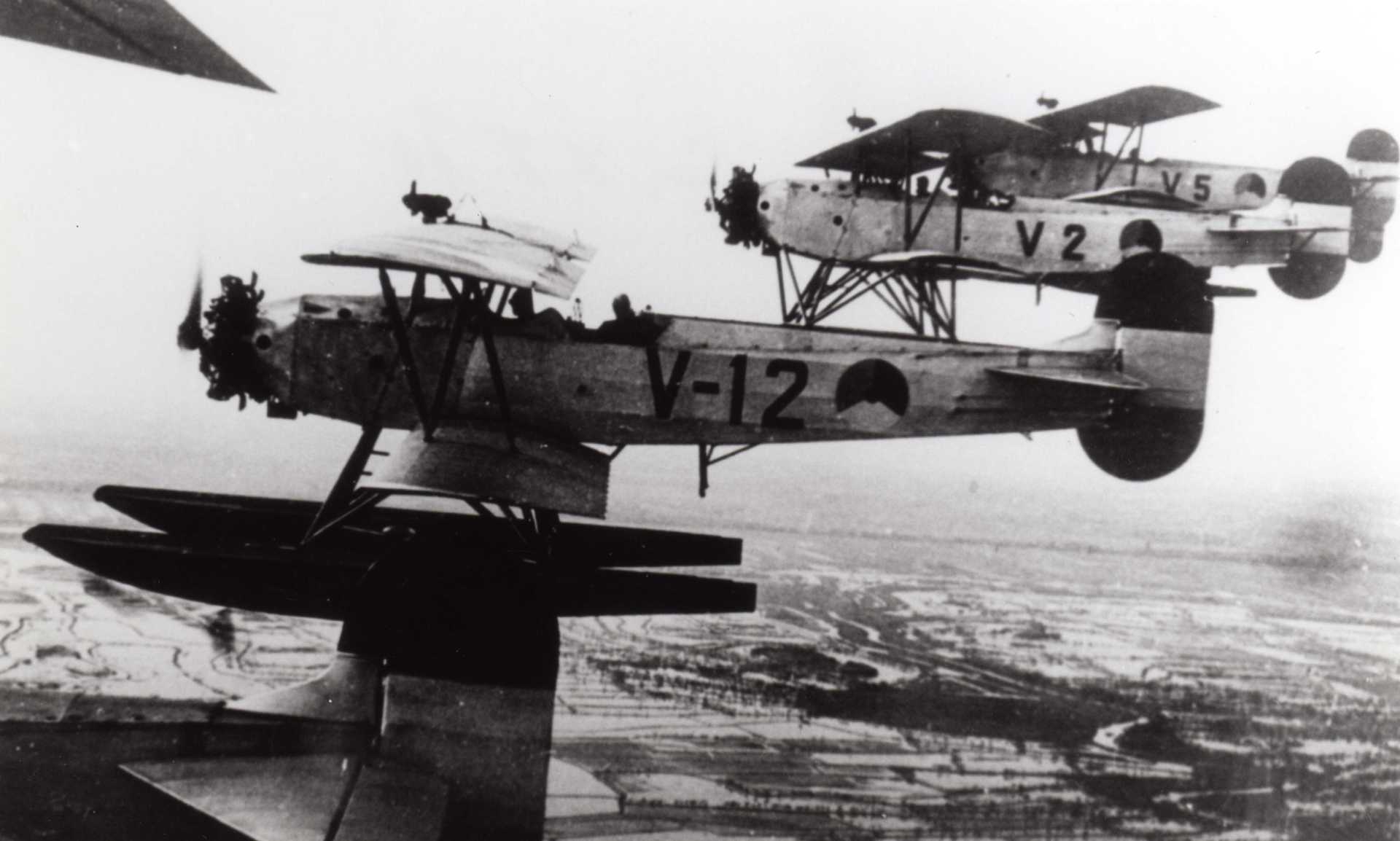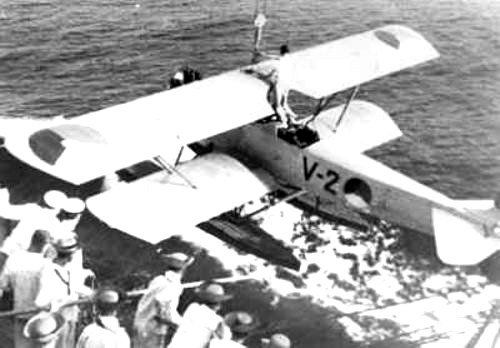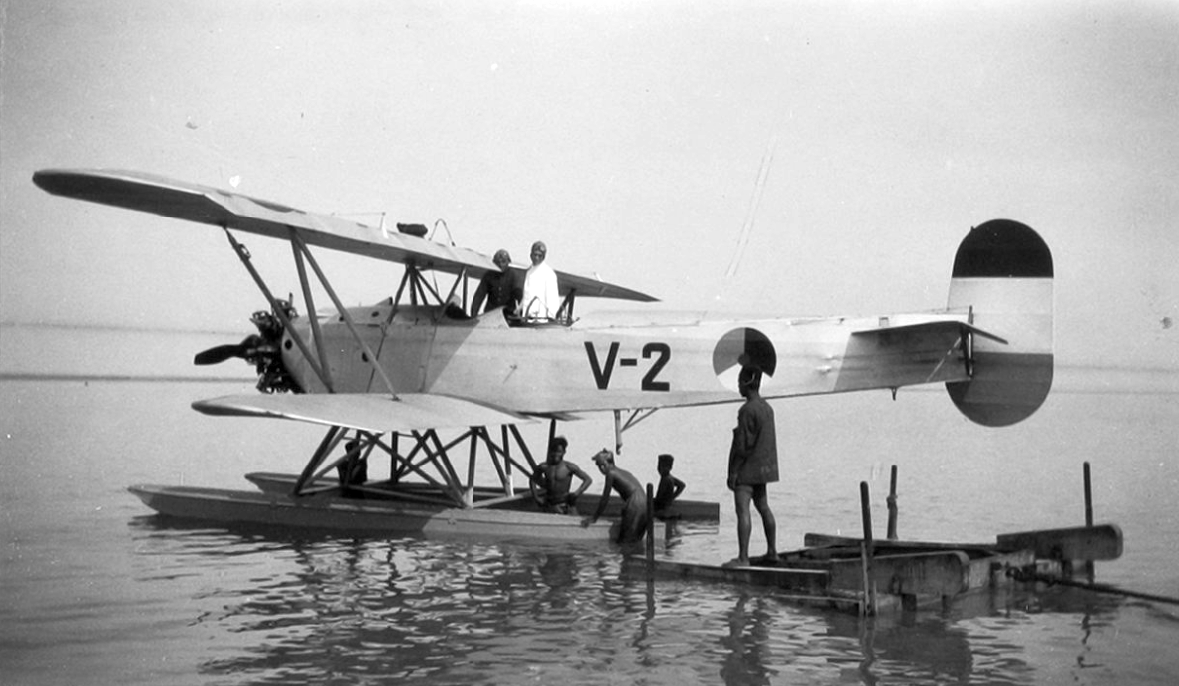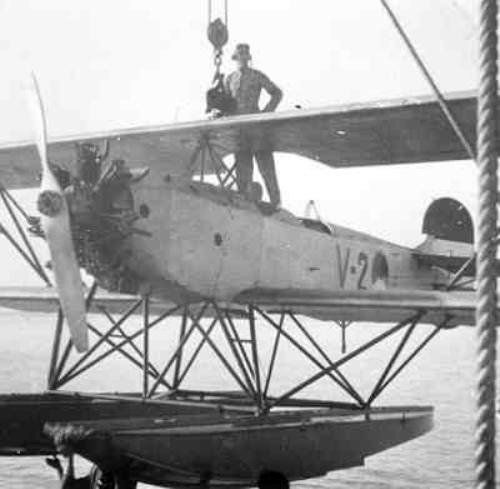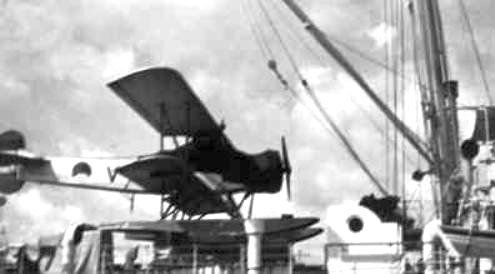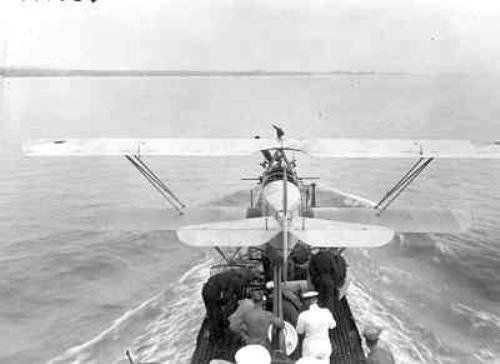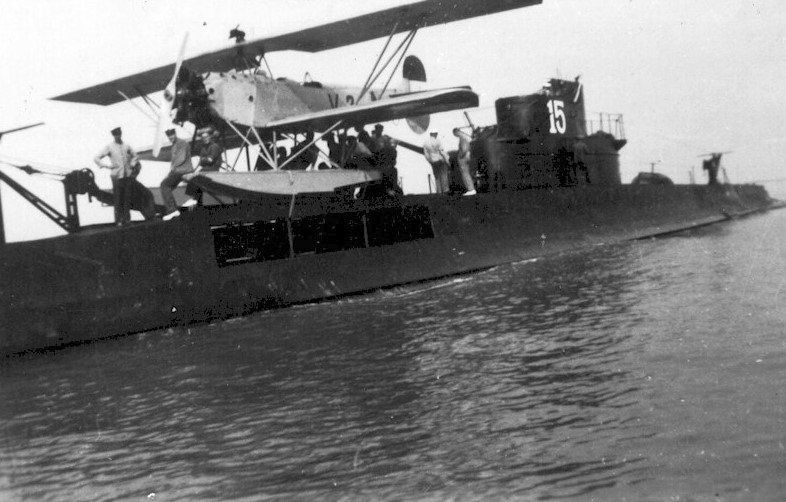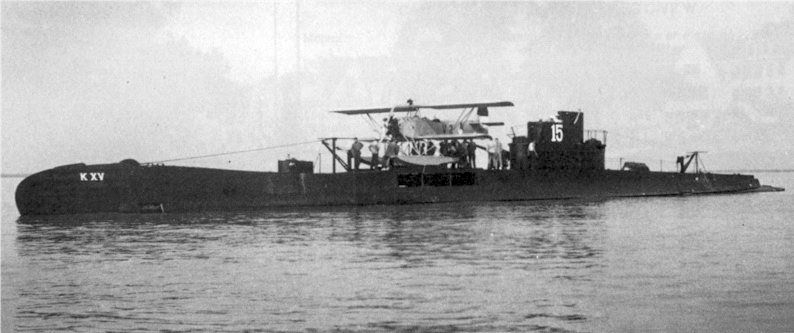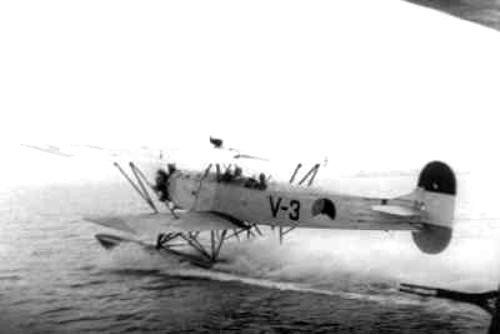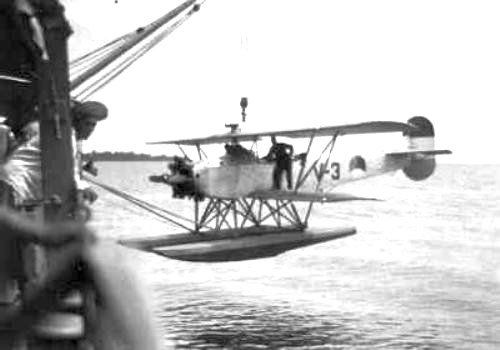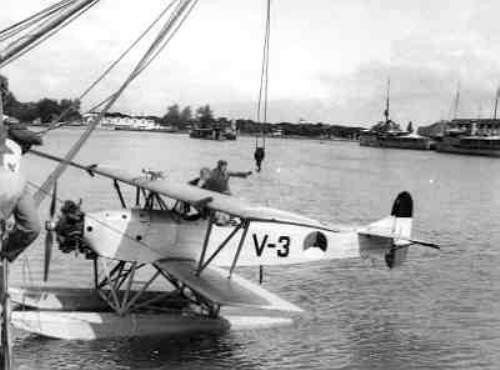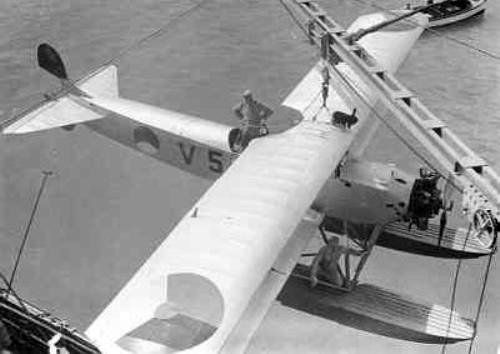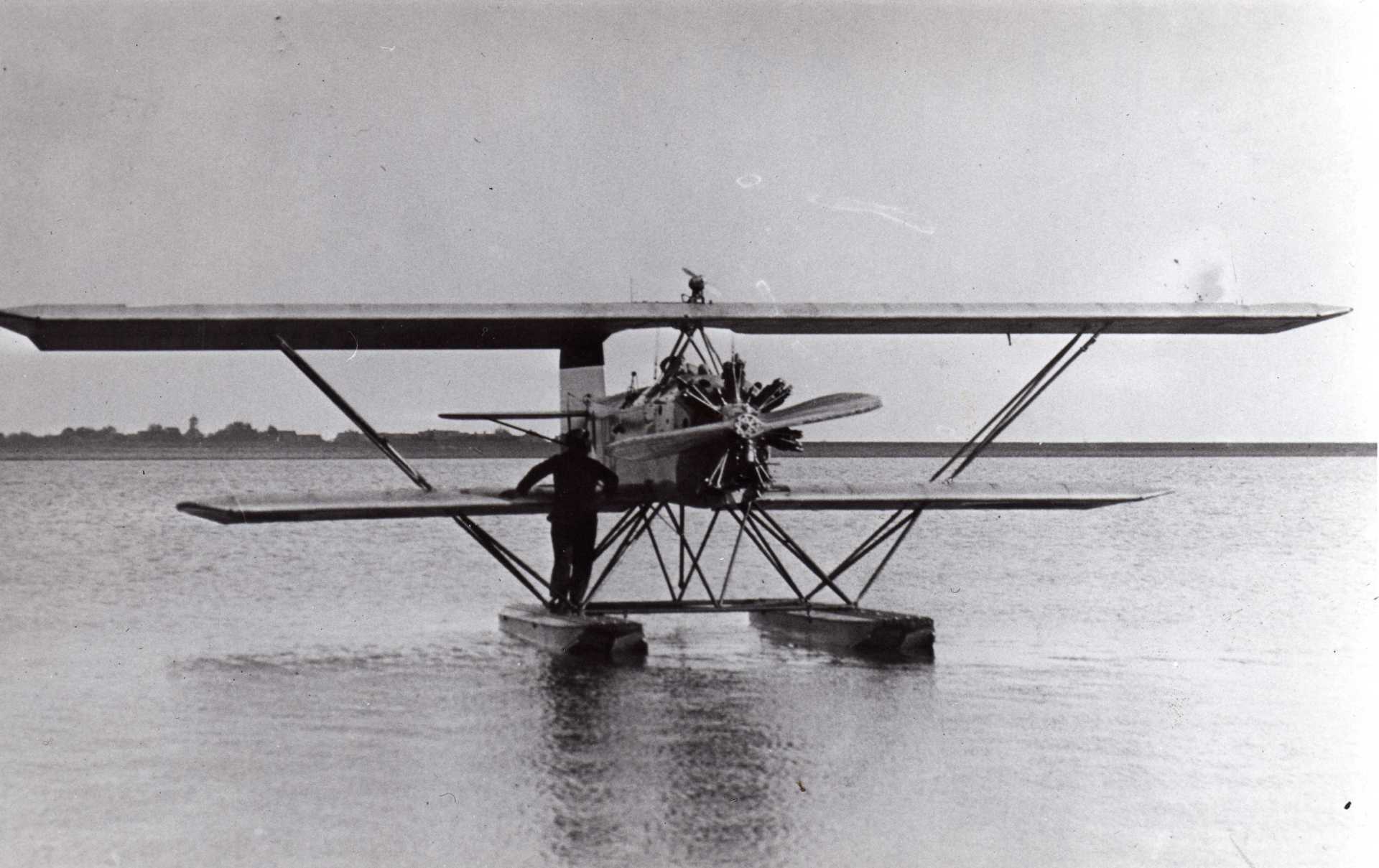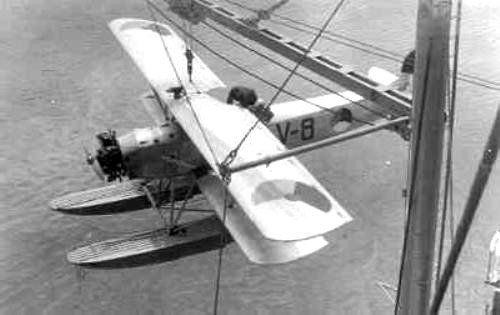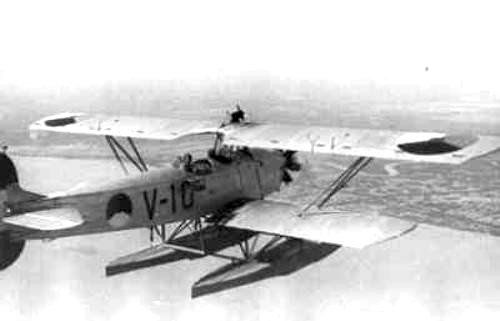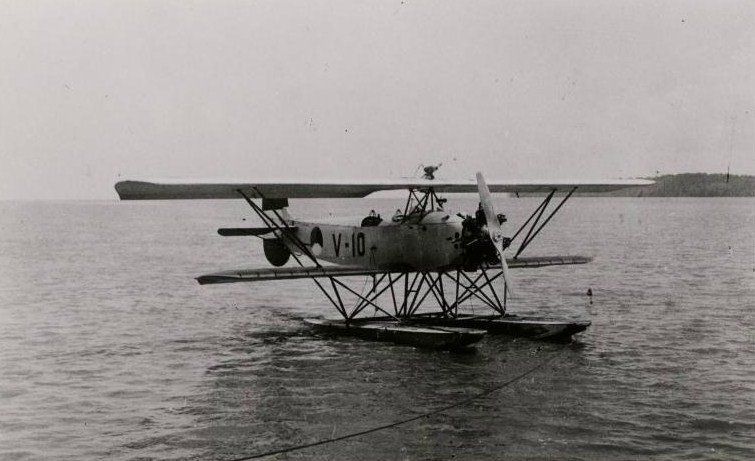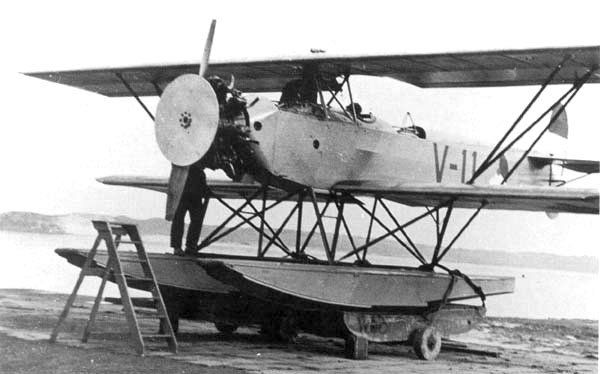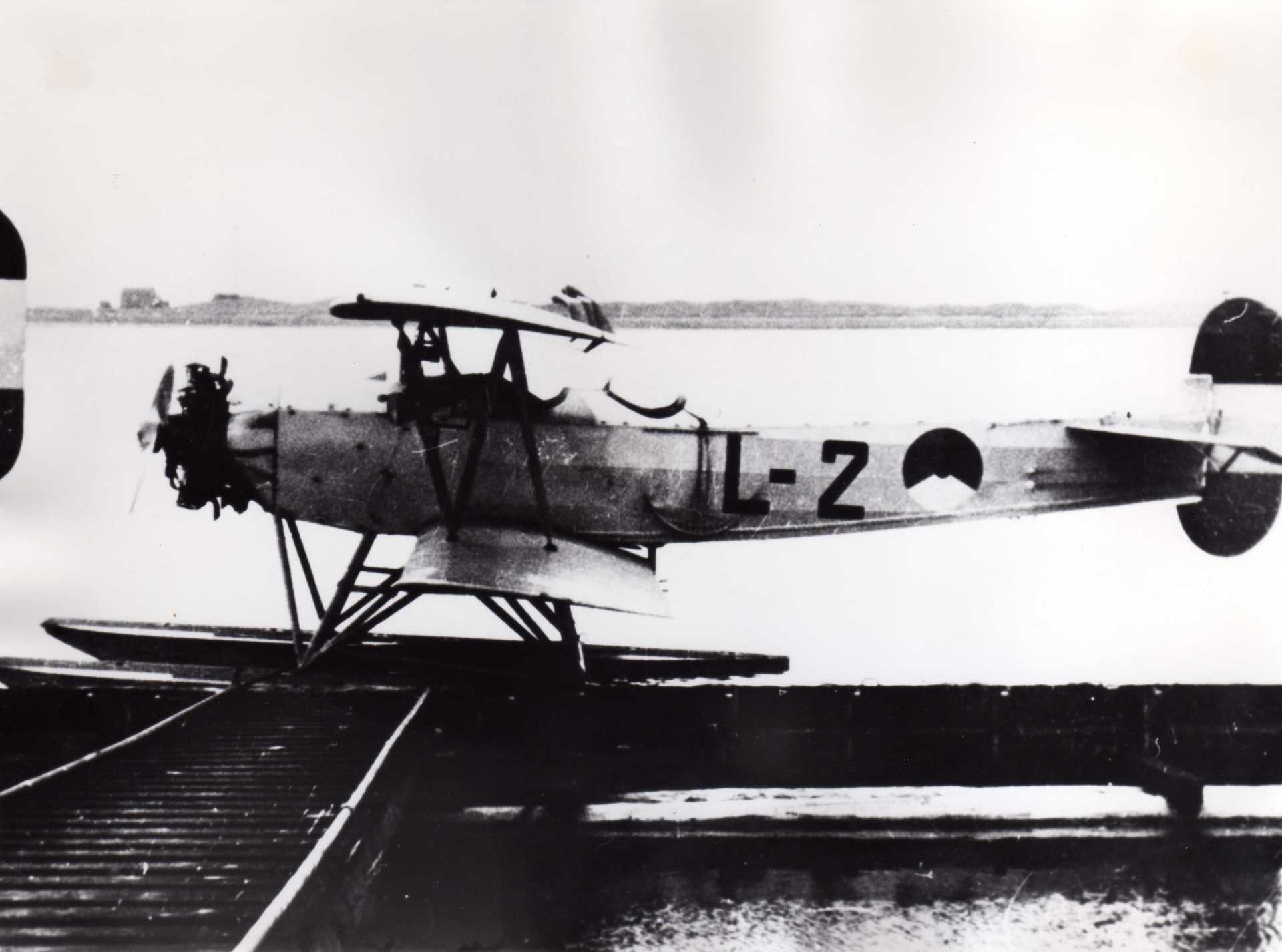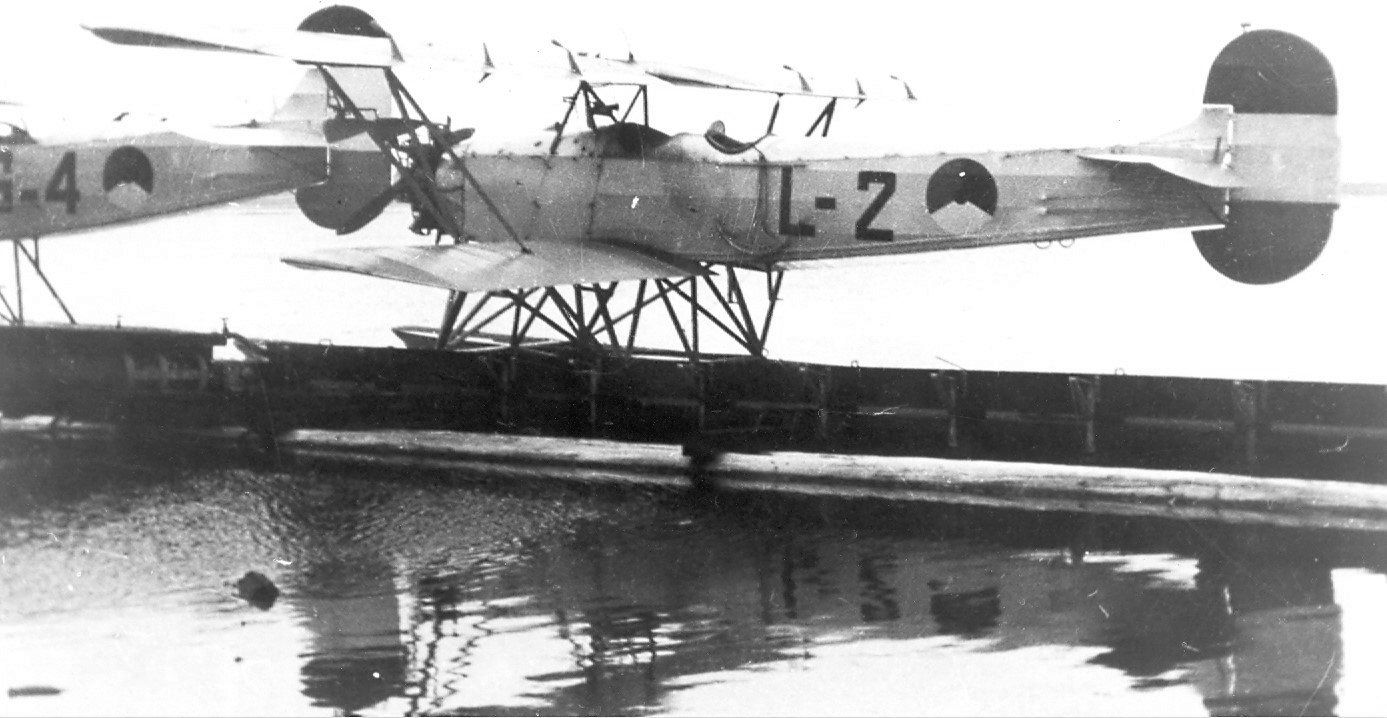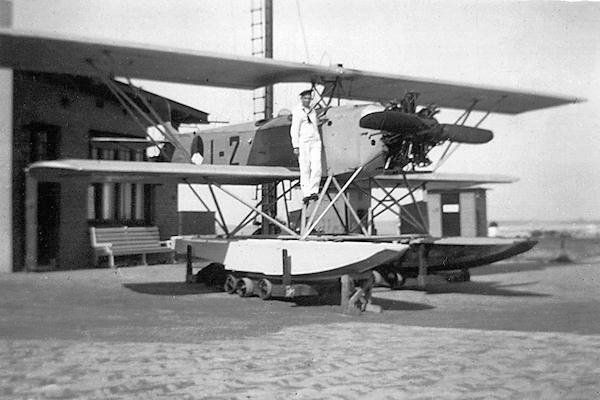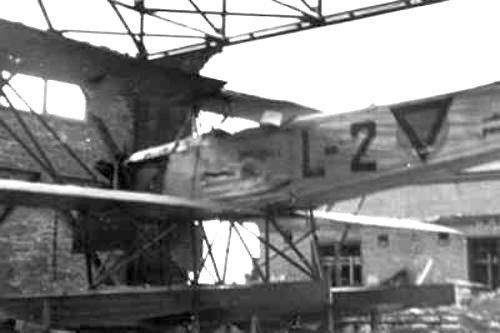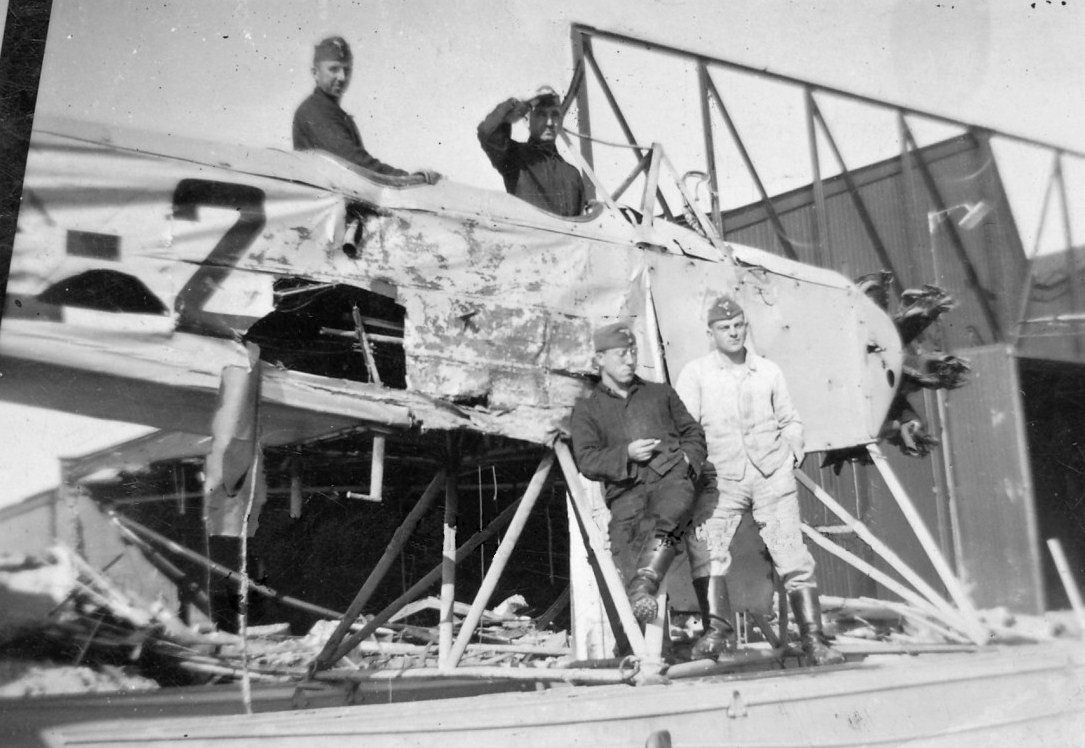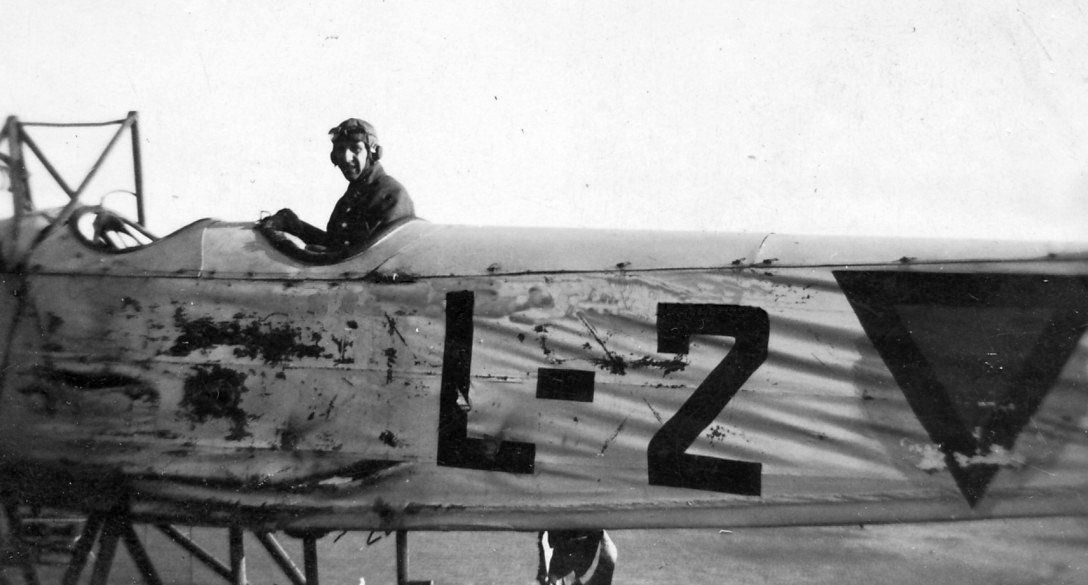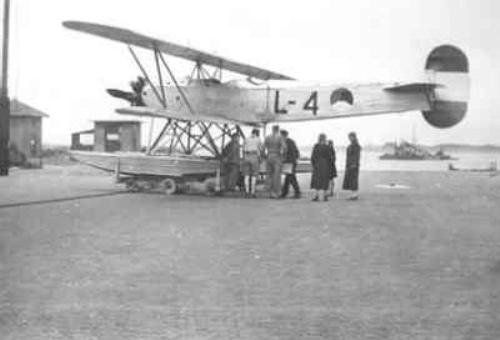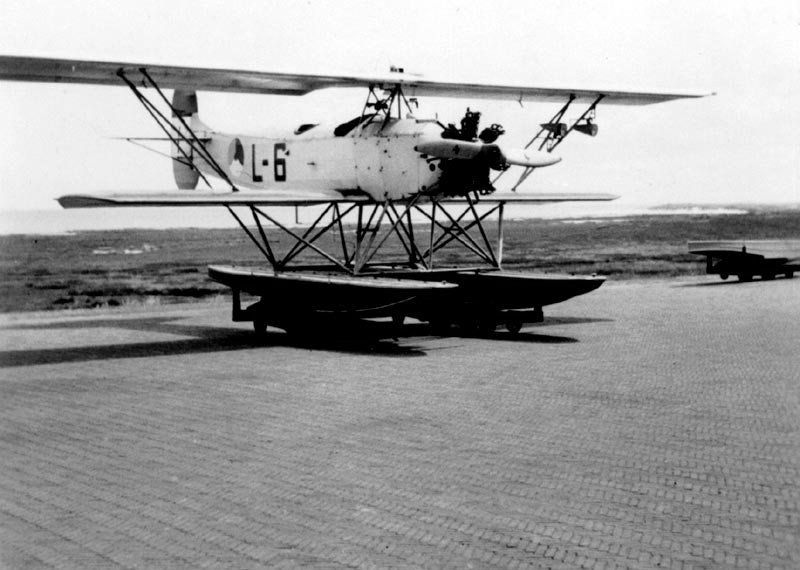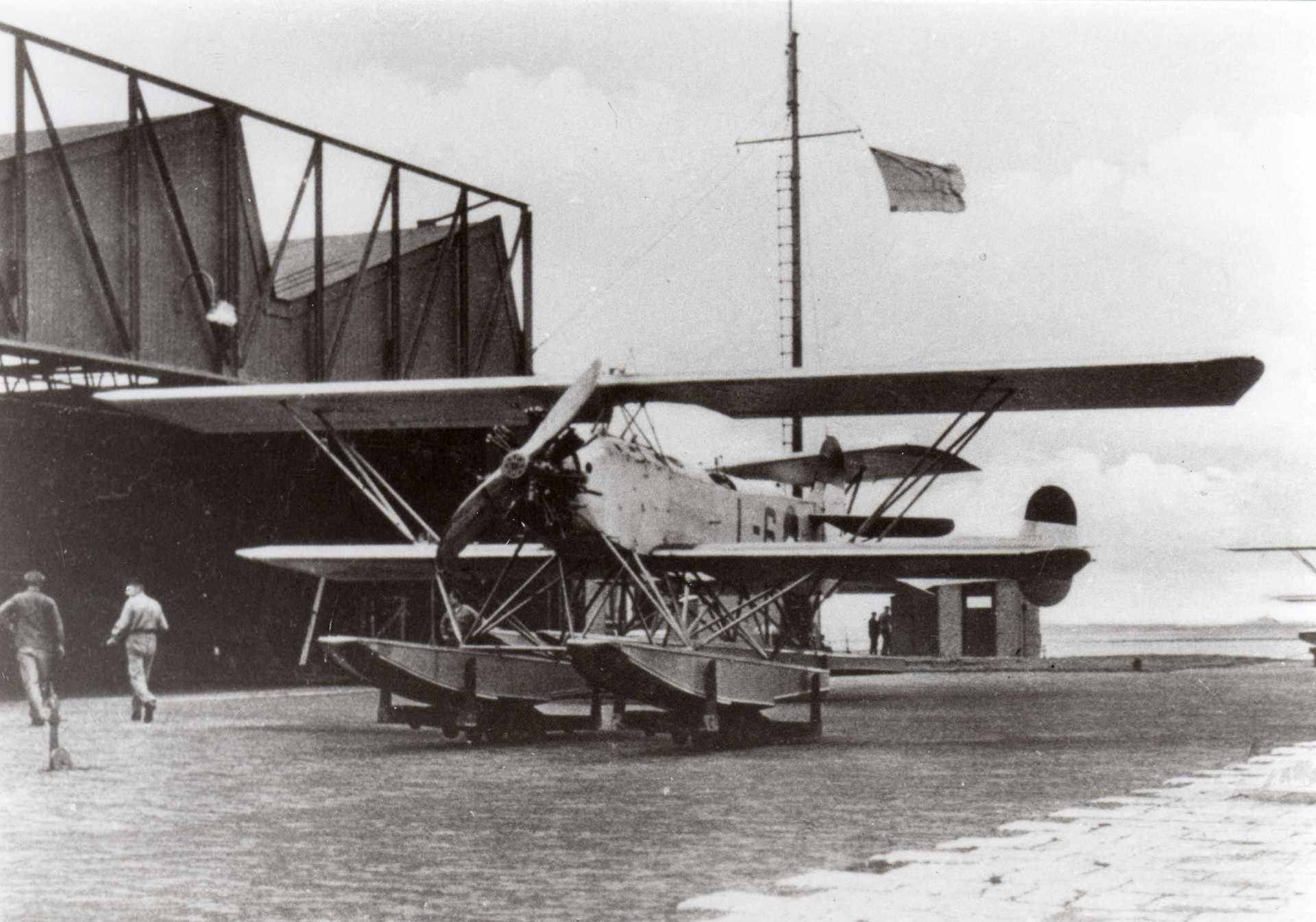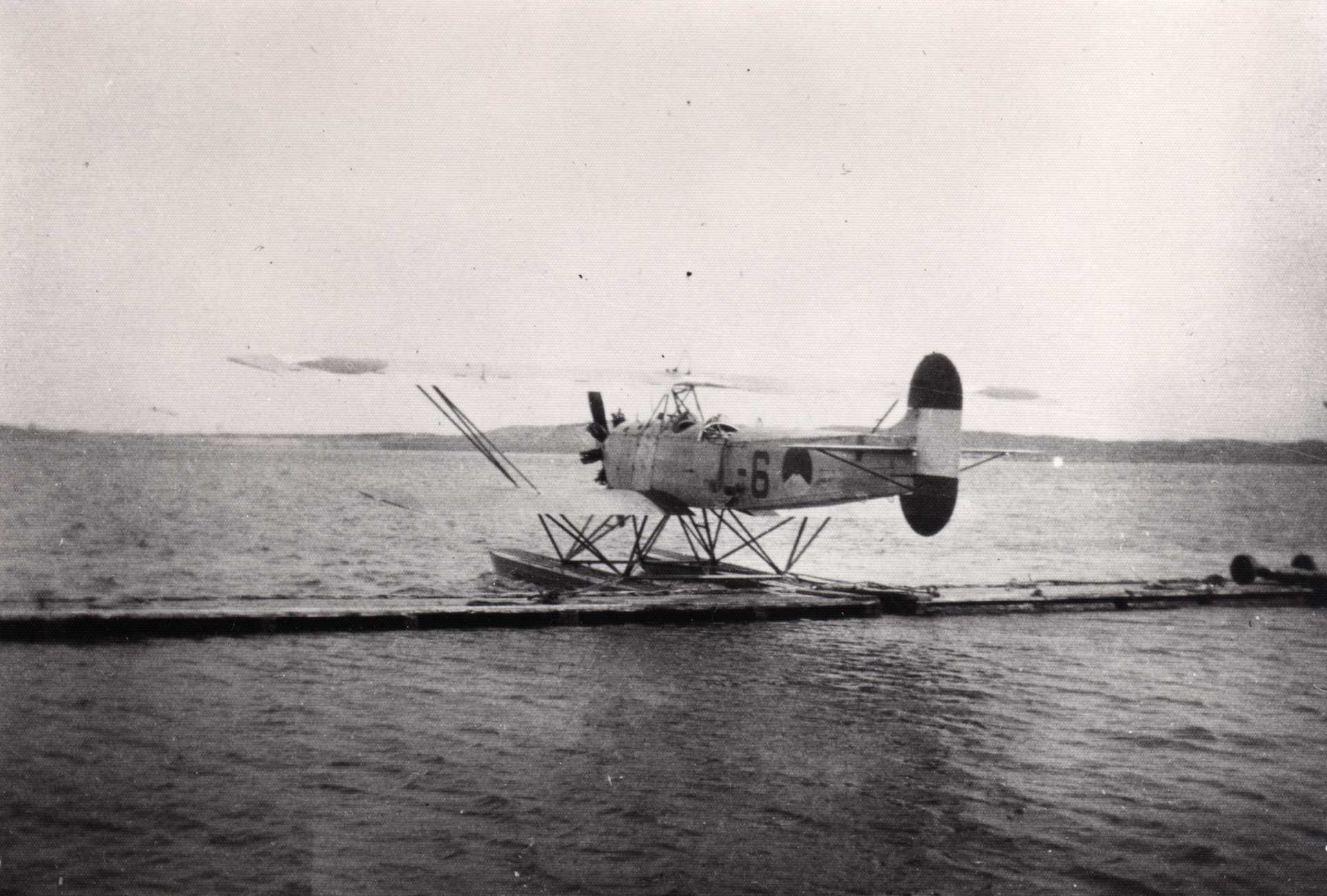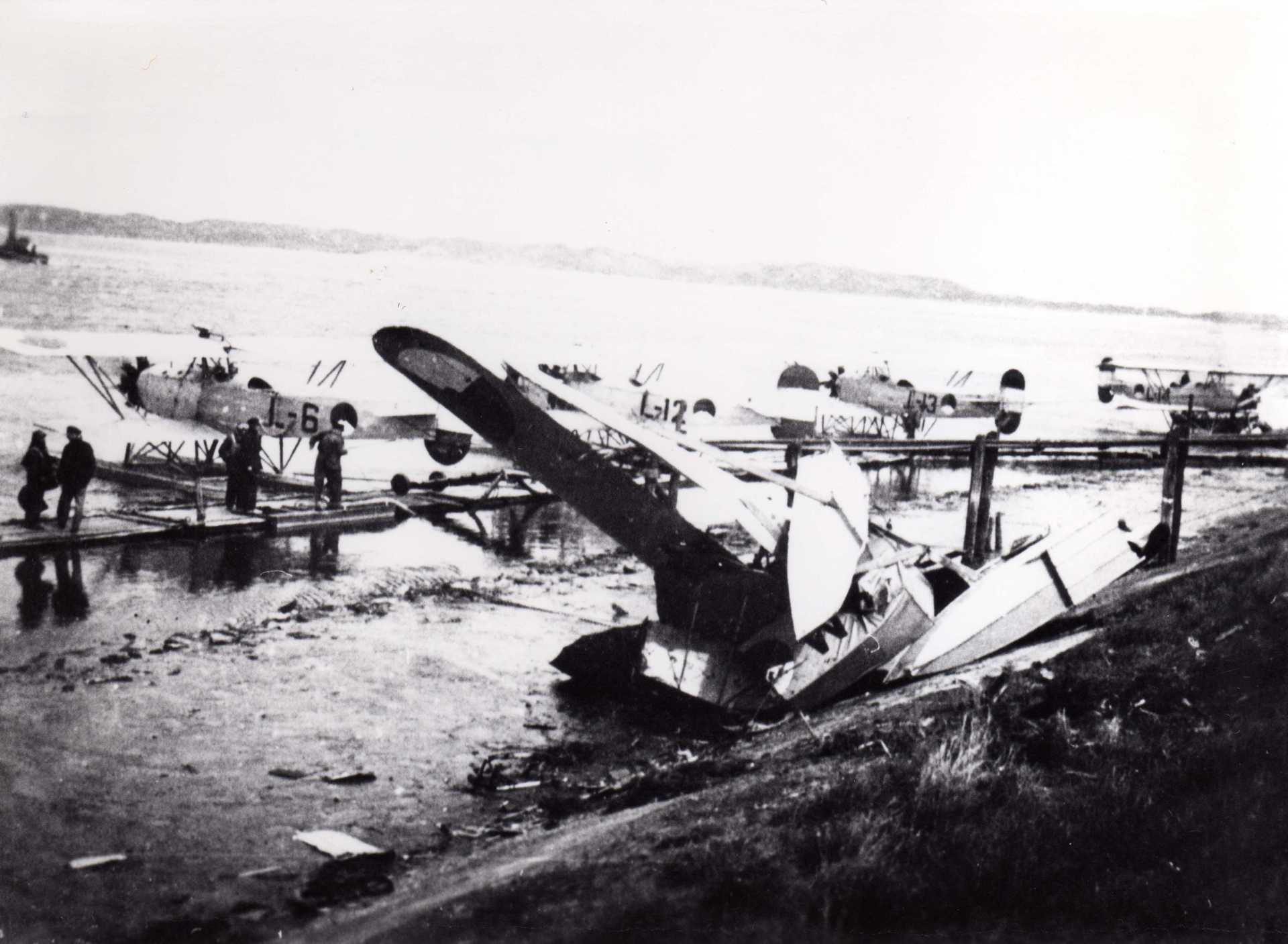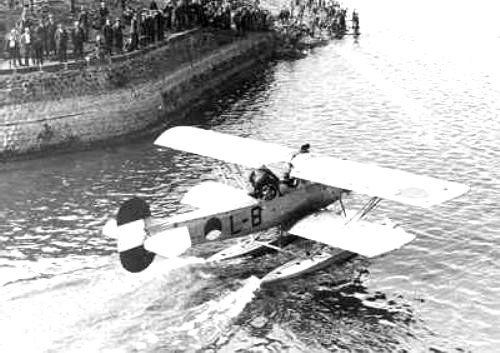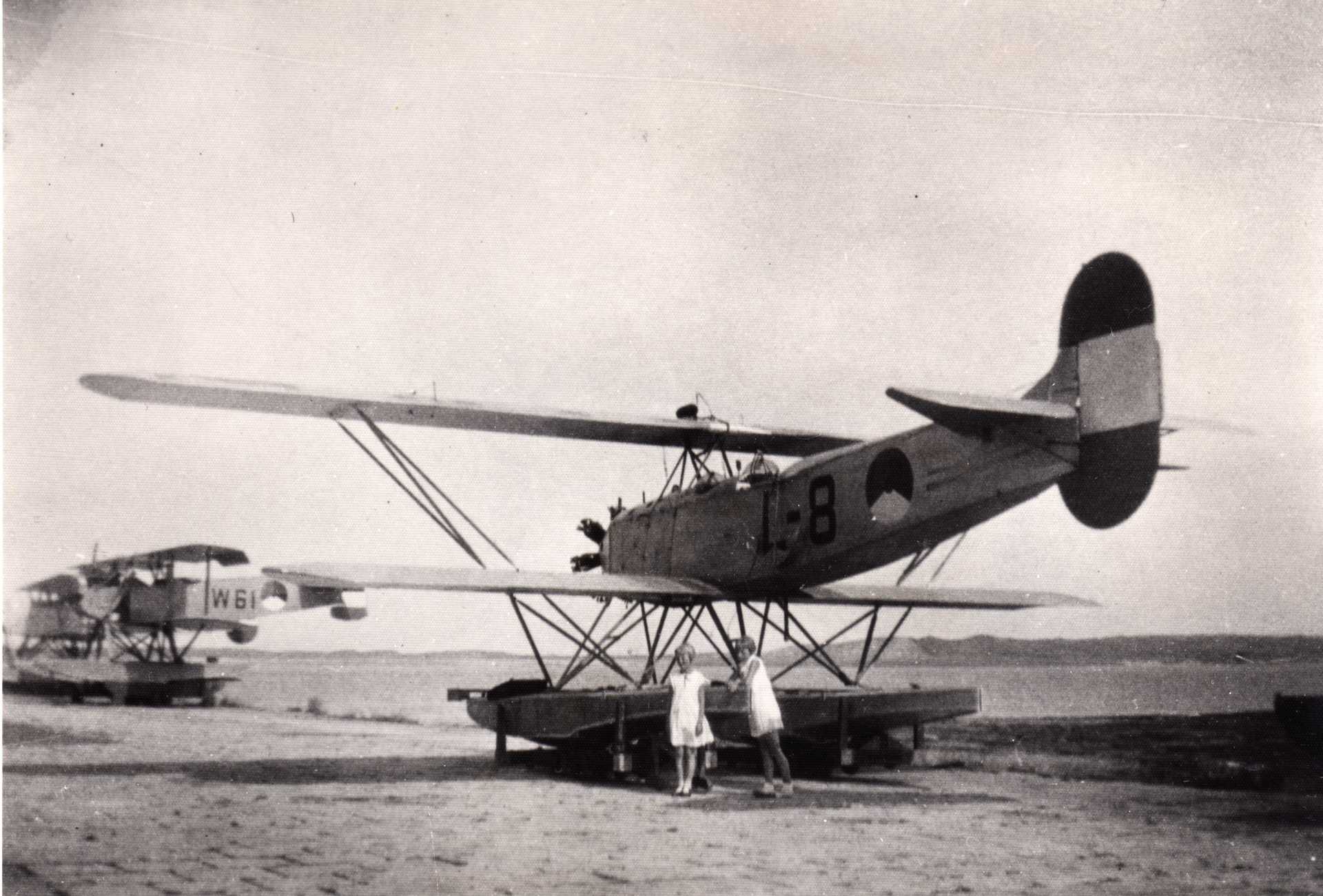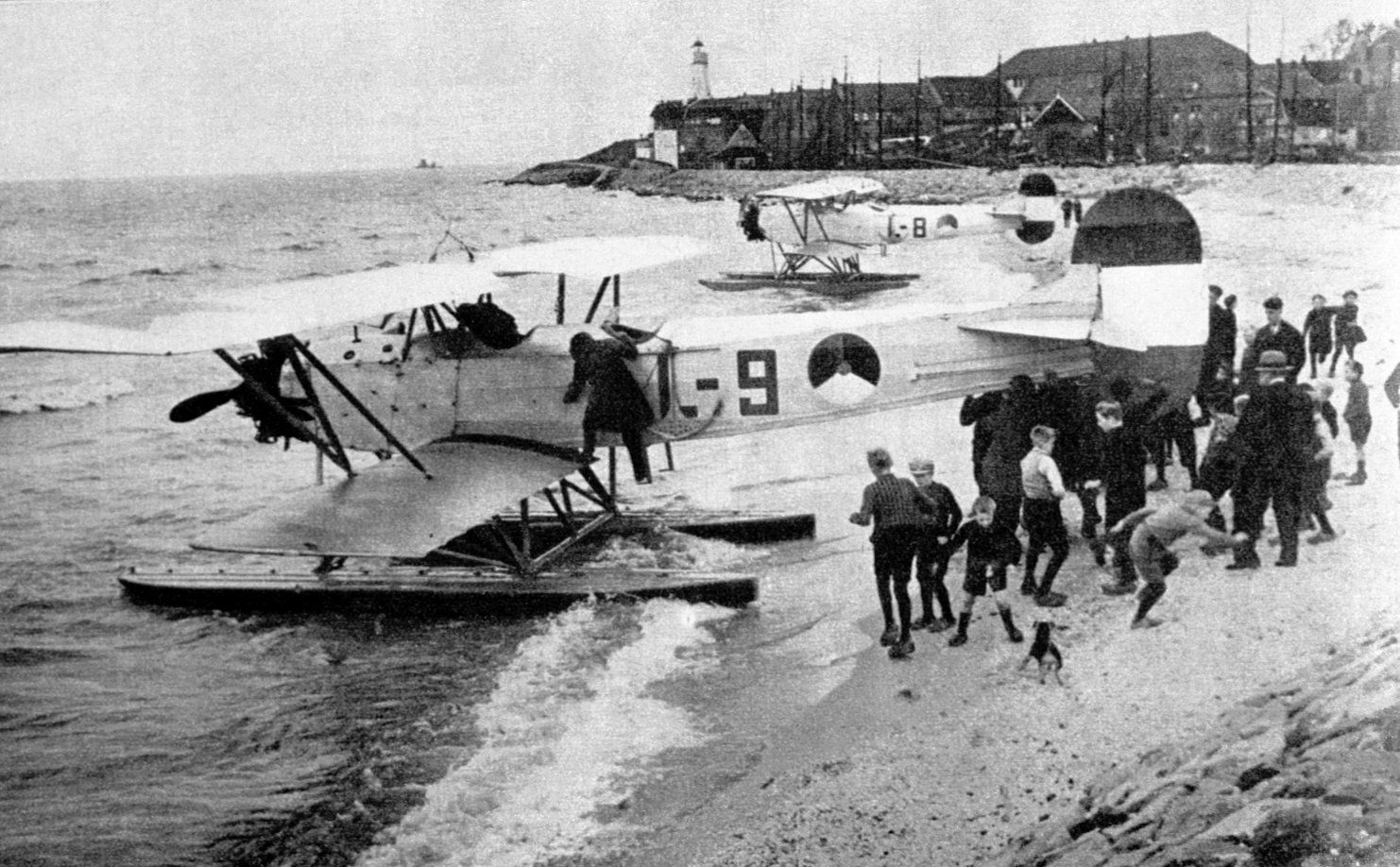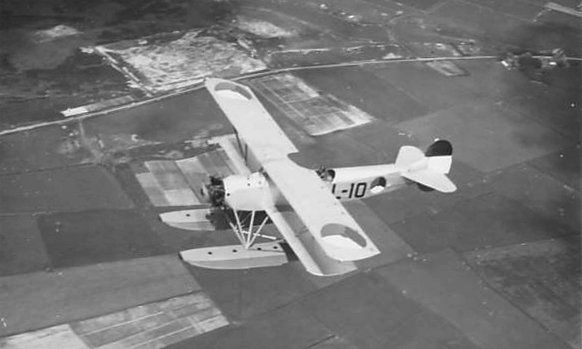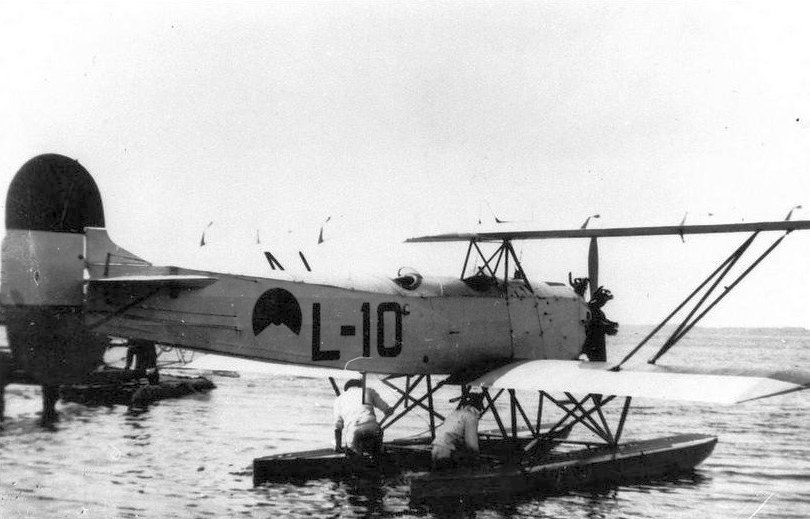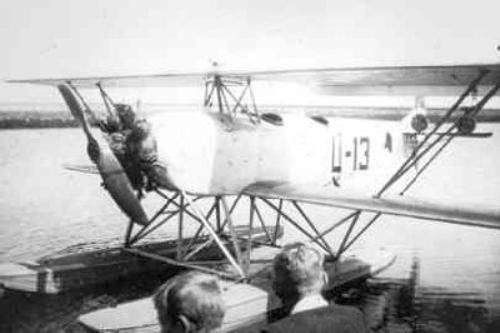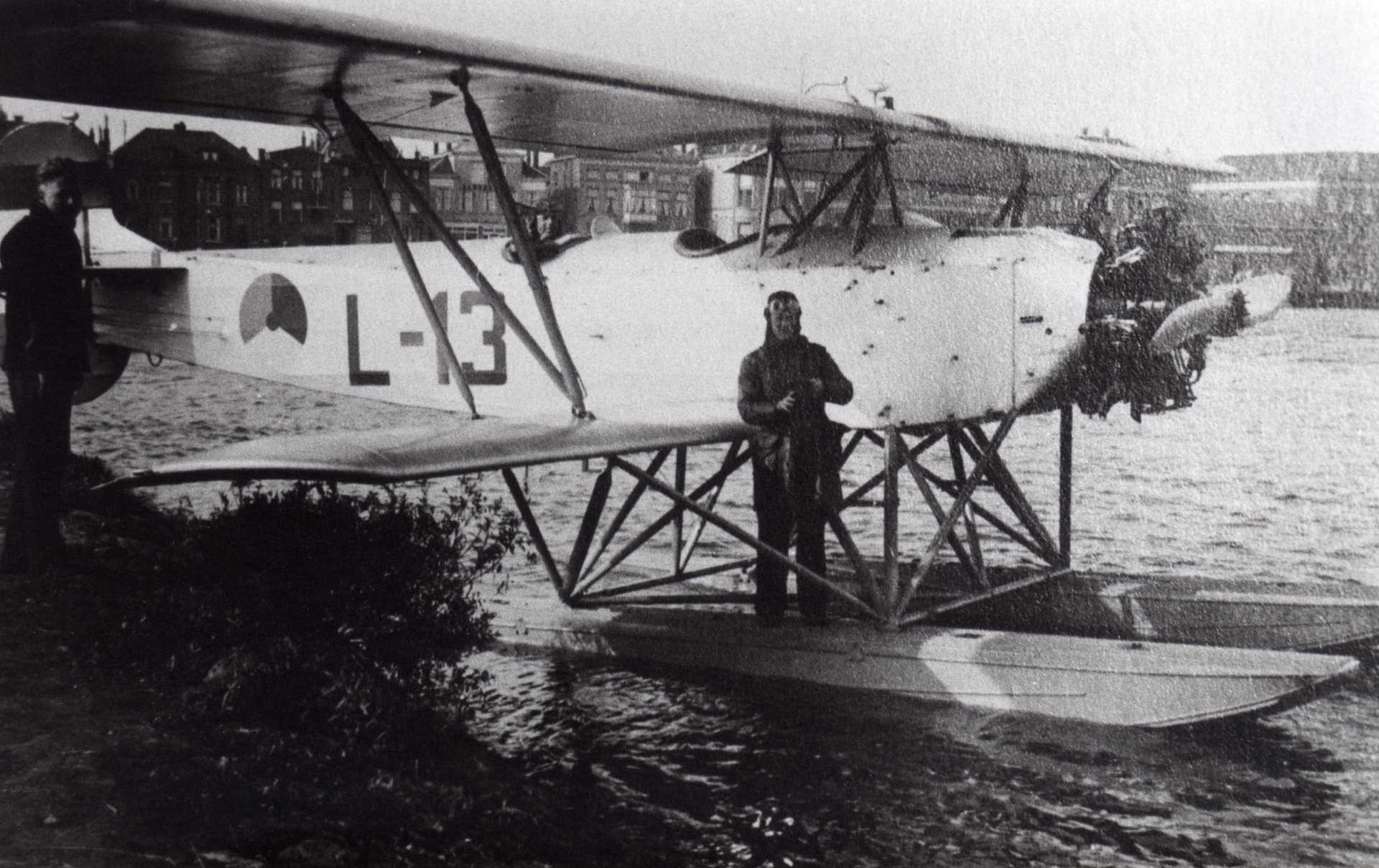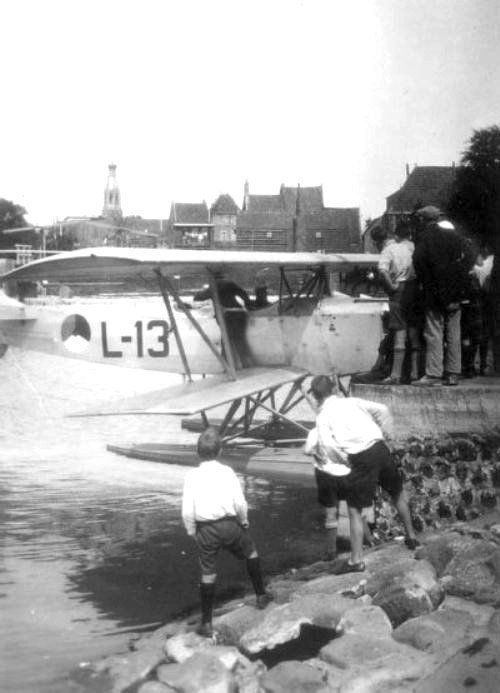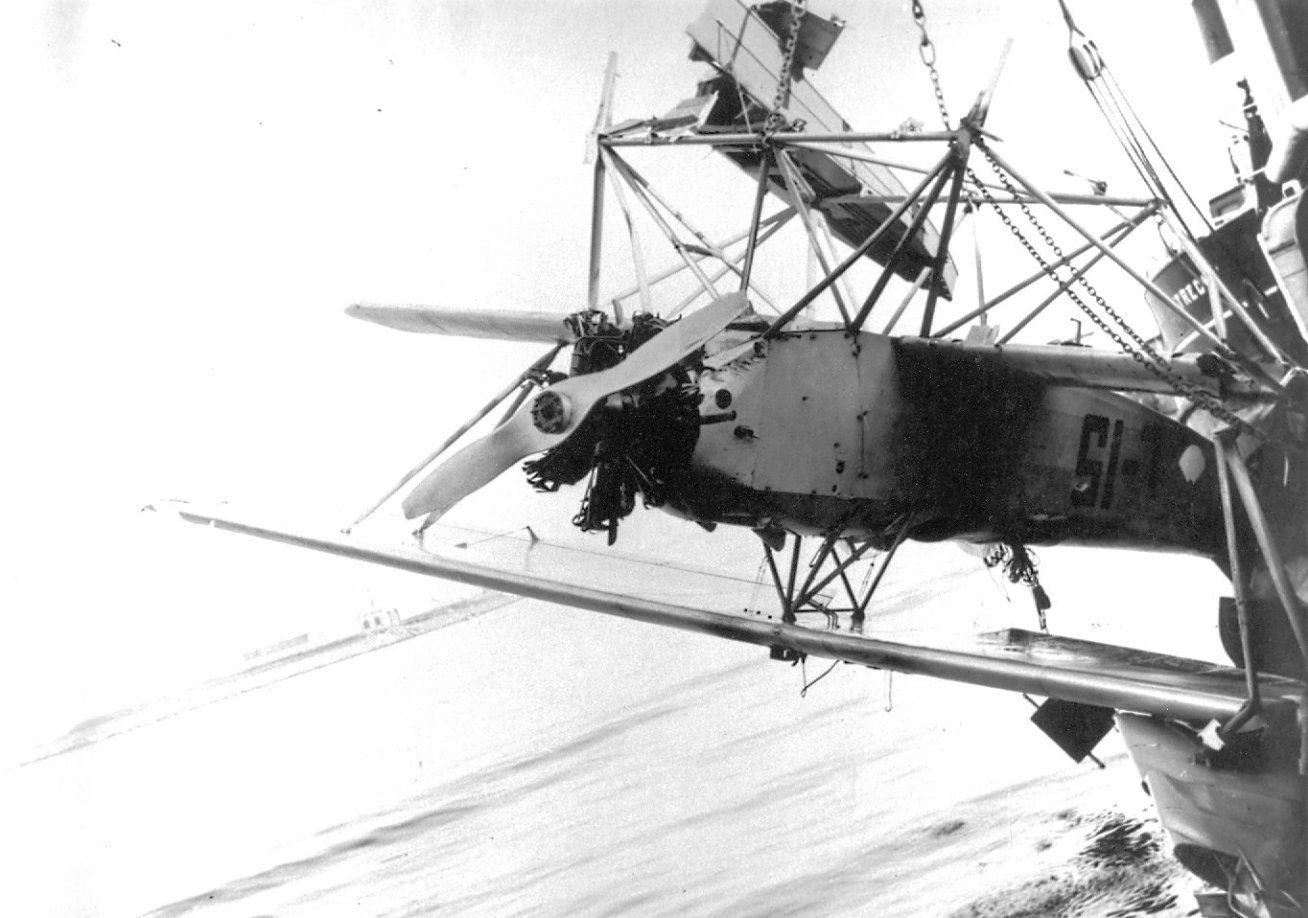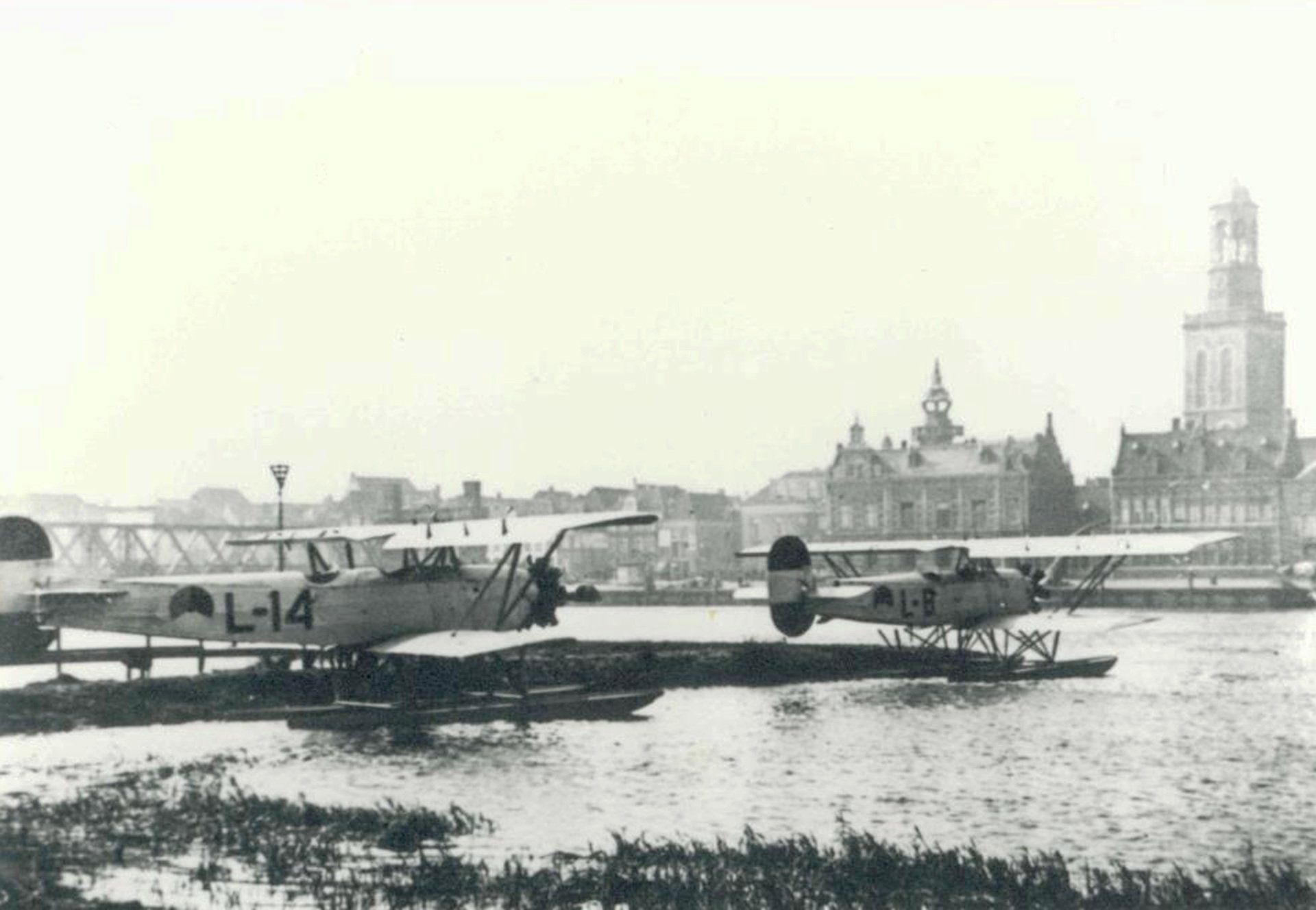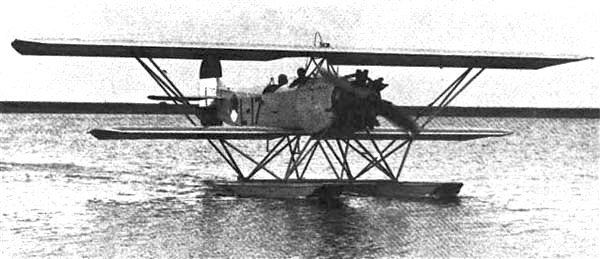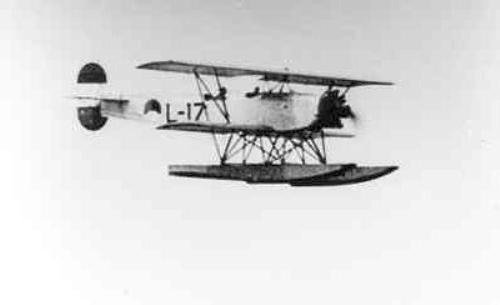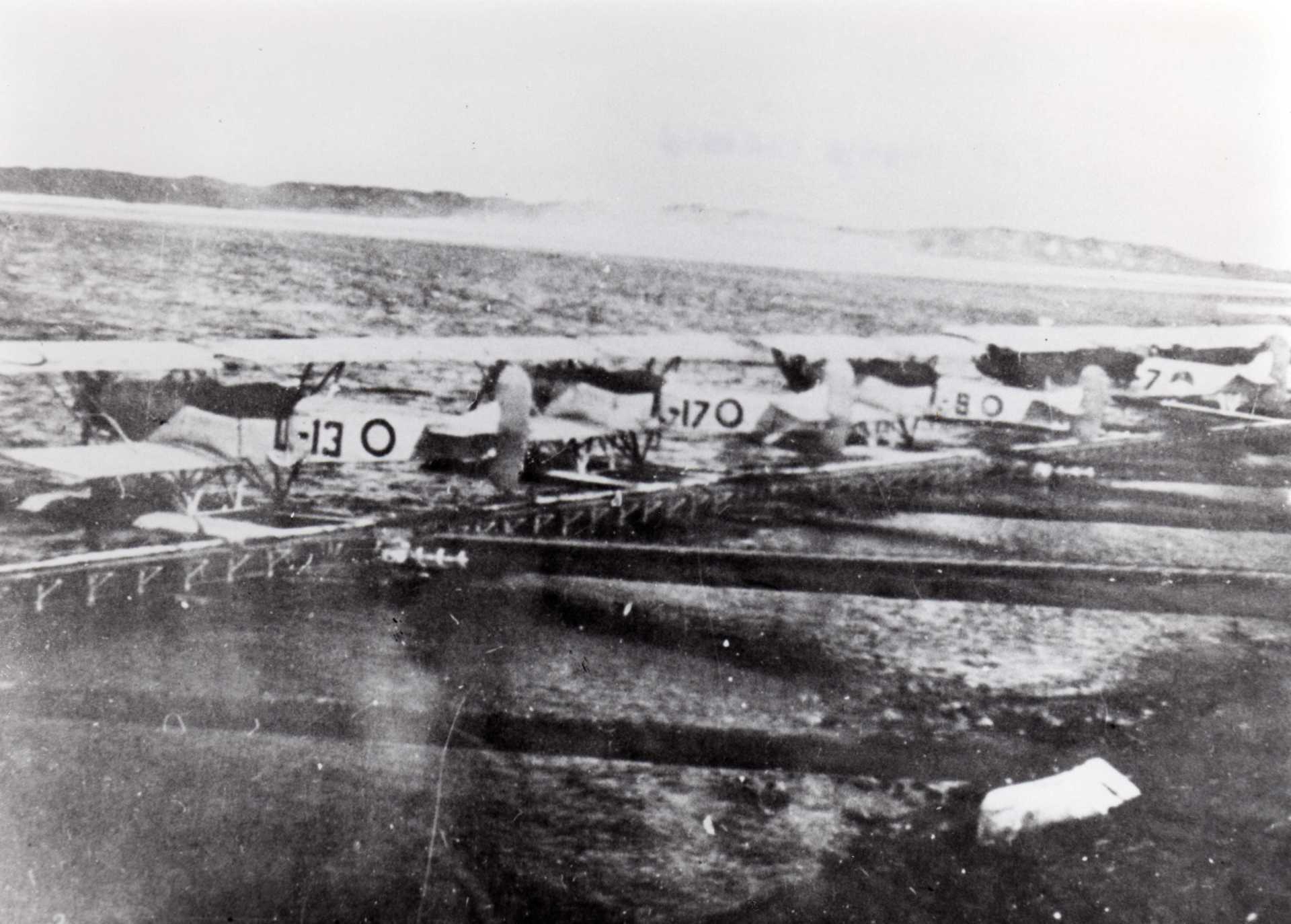Fokker C.VII-W
After a pioneering period with only a few aircraft, a great increase followed in 1919.
The Van Berkel WA enters the MLD in both the Netherlands and the Dutch East Indies.
They are seaplanes with a multitude of tasks.
Around 1927 there was a demand for a good successor in both parts of the Kingdom.
That will be the Fokker C.VII-W, which from 1928 will strengthen the MLD with thirty aircraft.
A very versatile floatplane, with which sgt-constable Dries Feenstra managed to fly a looping-the-loop in April 1930.
Click on the photo to enlarge the photo
-
01
ButtonDeliveries of the Fokker C.VII-W start in 1928 and the planes are largely completed at Vliegkamp Schellingwoude.
This air camp is close to the Fokker factory in Amsterdam North (on the Papaverweg) and is also partly used by the MLD (Marine Aviation Service).
Of the total number of 30 seaplanes, 13 first go to the Dutch East Indies.
They are stationed at Morokrembangan base
They receive registrations V-1 to V-12.
Here in the photo the prototype with a deviating tail, and still without indication.
The V-1 and V-2 will initially fly in with 2 other tails, but soon they will get the standard version.
-
02
ButtonThe prototype of the C.VII-W with engine already running. Taken at De Mok airfield on Texel
Still without indications and with test tail.
-
03
ButtonThe welded hull and chassis as the start of the prototype construction.
-
04
ButtonThe prototype at sea with the engine running.
-
05
ButtonThe V-2 on board Hr.Ms. Piet Hein of the Royal Netherlands Navy.
The Naval Aviation Service in the Dutch East Indies starts boarding aircraft very early.
By using a crane, they can be taken on board and also launched again.
-
06
ButtonThe Fokker C.VII-W with the same V-2 with covered engine.
The Piet Hein is a destroyer.
Certainly in the Indies, much testing is done with the predecessor of the aircraft carrier.
-
07
ButtonA formation of five C.VII-W aircraft above a gunboat of the Royal Navy.
It's Hr.Ms. Sumba, a sister ship of the Hr.Ms. Flores.
The presence of so many people on board can be explained: In 1930 demonstrations are given to invitees.
And that is a good opportunity for the MLD to show off.
-
08
ButtonAnother formation of three C.VII-W planes flying over the Hr.Ms. Sumba.
-
09
ButtonBack to the prototype without any designation, the later V-1 from MLD.
Work is done on adjusting the synchronization system.
This takes place at De Mok airfield on Texel.
-
10
ButtonThe original prototype in full flight over the Dutch East Indies.
The V-1 now with the final rudder.
-
11
ButtonThe V-1 of the MLD starting in rough water with yet another rudder variant.
-
12
ButtonThe V-1 on the slipway on one of the tow trucks.
-
13
ButtonFull action with a nice view of the 225 hp Amstrong Siddeley Lynx engine.
-
14
ButtonThe V-1 on dry land of the MLD air base Morokrembangan near Surabaya (Java).
-
15
ButtonFlying above the vast Dutch East Indies.
With another C.VII-W. hidden in the background
-
16
ButtonThe V-1 once more with the pilot rudder.
Presumably still in the Netherlands.
-
17
ButtonNow in the Dutch East Indies and on the quay attached to two cables.
It is likely that the V-1 is located here at the MLD air base Morokrembangan.
-
18
ButtonThe V-1 with yet another tail. See also photo 5.
The semi-stressed one-and-a-half-decker gets plywood wings with cotton cover.
The floats are initially made of wood, later made of duraluminium.
The engine is a 225 hp Armstrong-Siddeley Lynx.
Later the Lorraine Dietrich Mizar of 280 hp will follow.
-
19
ButtonThe V-1, the original prototype, with the final tail.
The wingspan is 12.9 m, the length 10.2 m and the wing area 37 m ^ 2.
Max. speed 175 km / h, Landing speed 86 km / h.
Most of these C.VII-W aircraft are still photographed in the Netherlands.
-
20
ButtonThe V-1 in full flight in the Dutch East Indies near Morokrembangan Airport.
The purchase of the Fokker C.VII-W is intended to replace part of the Van Berkel WA aircraft.
The C.VII-W has 2 seats. The flight range is 920 km. The height limit around 3,300 m.
Just like in the Netherlands, the aircraft is used as a training aircraft, but in the Dutch East Indies it is also a scout plane, because of the many islands.
This type is also used as a scout on various ships of the Royal Dutch Navy.
The armament consists of bombs, a fixed machine gun and two movable machine guns in the second seat.
-
21
ButtonThe V-1 with the engine running on the way to open water.
In the front is the aviator and in the back is the gunner / observer.
-
22
ButtonV-12, V-2 and V-5 formation.
With the V-2 tests are carried out shortly after delivery with the Submarine K.XV.
It involves taking on board and sailing aircraft on the top of the submarine.
-
23
ButtonMLD C.VII-W; the V-2 in the Dutch East Indies.
With the engine turned off, the aircraft is pushed ashore.
-
24
ButtonHoisting on board using an attachment point in the middle of the top wing.
The so-called 'spawning man' is wearing the tropical straw hat of the MLD and a long stick.
Presumably this is on the gunboat Hr.Ms. Sumba of the Flores class.
-
25
ButtonThe same V-2, now almost out of the water.
And all this takes place at Marine Air Camp Morokrembangan near Surabaya, Dutch East Indies.
-
26
ButtonThe V-2 has now been turned here (at a different time).
In this way, the C.VII-W comes back to shore via the ramp cart.
-
27
ButtonHere is the start of turning the V-2.
On this side there is no connecting line between V and 2, which may be related to repair.
-
28
ButtonWith the engine turned off, the V-2 is lifted to Hr.Ms. Sumba (?)
The importance of an artillery scout plane is gradually increasing.
So launch, then fly forward, then air reconnaissance and back to the sailing ship.
-
29
ButtonAt his resting place, in this case of Gunboat Hr.Ms. Sumba.
A procedure that is gaining increasing acceptance at the Naval Aviation Service.
-
30
ButtonLaunching of the V-2 with the engine running, from Destroyer Hr.Ms. Piet Hein.
-
31
ButtonAnother launch with the engine of the V-2 running from the destroyer Hr.Ms. Piet Hein.
Starting the engine is very necessary. On the water, the cable was disconnected from the plane and it was important to quickly taxi away because of the current of a sailing ship.
The speed of the aircraft in the water should be approximately equal to the ship.
-
32
ButtonHere the Fokker C.VII-W of MLD the V-2 in yet another role.
As an aircraft on the submarine Hr.Ms. K-XV.
Especially as an artillery observer.
-
33
ButtonWith 15 in normal letters on the tower on the back.
Staying slightly above the waterline gives the seaplane a stable start.
It is lifted again via the crane on the left.
-
34
The submarine K XV 15The same photo but a complete picture.
-
35
ButtonThe C.VII-W of MLD, the V-3, taxies quickly after being dropped on the water away from HNLMS destroyer Van Nes.
-
36
ButtonLifting the same V-3.
-
37
ButtonAttaching the V-3.
-
38
ButtonThe Fokker C.VII-W of MLD V-4 on board supposedly the destroyer Hr. Ms. Van Nes.
Parked on its position, with one of the torpedoes clearly visible underneath.
Also a clear view of the second place, that of the gunner, with the movable machine gun.
-
39
ButtonThe V-5 still on its way to a ship of the Royal Dutch Navy with the engine running.
-
40
ButtonHoisting the same V-5 on board with the engine switched off.
Left one of the "spawning man sticks".
-
41
ButtonThe V-5 on solid ground of the Morokrembangan Naval Air Base.
Provided with many new buildings since the foundation in 1925.
In any case, major maintenance is easy to do at this accommodation.
The enormous fuel tank is clearly visible behind the engine and in front of the pilots seat.
-
42
ButtonThe V-6 just before takeoff.
-
43
ButtonThe V-8 with the engine already running is hoisted into the water via the crane.
Presumably from the cruiser HNLMS Sumatra, given the height to the water.
-
44
ButtonThe V-9 in full flight.
Mail transport is also carried out with these aircraft in the Dutch East Indies.
Also ambulance services and parcel transport.
-
45
ButtonThe V-10 in full flight in the Dutch East Indies.
-
46
ButtonThe same V-10 with the engine turned off and already on the line for mooring.
At Morokrembangang Air Camp near Surabaya.
-
47
ButtonTesting the fixed machine gun of the V-11 at Morokrembangang.
-
48
ButtonThe same V-11 during a practice with the banner used for that.
-
49
ButtonWith the engine running, the V-12 is disconnected from the crane.
One more cable is attached to the top of the top wing.
-
50
ButtonThe same V-12 is the last Fokker C.VII-W from the Dutch East Indian series.
Secured here on the engine destroyer Hr.Ms. Van Nes or Piet Hein.
In addition, a wing part of a second C.VII-W is visible.
A brief overview of the end of the Dutch East Indian C.VII-W seaplanes:
The V-1 is depreciated in Dec 1938.
The V-2 to V-5 are destroyed in March 1942 during the Japanese raid.
The V-6 is depreciated in January 1939.
The V-7 and 8 are destroyed in March 1942.
The V-9 crashed at Morokrembangang on May 15, 1941
The V-10 to V-12 are depreciated in 1939
-
51
ButtonThe V-12 while hoisting on board the cruiser Hr.Ms. Java or Hr.Ms. Sumatra.
-
52
ButtonAfter the Dutch East Indies V series of the MLD follows the L series stationed in the Netherlands from 1929 to 1932.
They are delivered in two series and remain largely active until May 1940.
The registrations run from L-1 to L-18.
The dimensions and further data remain largely the same.
Only the Armstrong Siddeley Lynx engines of 225 hp are replaced in the last series.
The 280 hp Lorraine Dietrich Mizar is used for this.
Here the L-2 of the Naval Aviation Service at De Mok Airport on Texel.
On May 10, 1940, the aircraft was taken out of action by the Germans.
-
53
ButtonThe Fokker C.VII-W of MLD, the L-2, docked at De Mok airfield on Texel.
To the left of it is the C.VIII W of MLD, the G-4
-
54
ButtonThe same L-2 is on shore with the help of the tow cart.
-
55
ButtonThat L-2 was therefore still active on Texel during the German invasion.
Shown here in the mobilization painting with the orange triangle that was used from 1939 onwards.
In the Netherlands, these C.VII-W aircraft are often used as training aircraft.
In the Dutch East Indies they were used, among other things, as a scout and in the Netherlands they are also used as an on-board aircraft.
-
56
ButtonThe same L-2 with clear overpainting to the orange triangle.
Heavily damaged after the surrender of the air camp to the German troops in May 1940.
-
57
ButtonThe Germans who happily carry out the demolition work.
Among other things, the wings have already been removed.
-
58
ButtonIn what is left of the further demolished L-2, there is a German, proudly taking a photo for the home front.
-
559
ButtonFormation of the L-3, L-4 and L-11 at HNLMS Van Nes.
The Van Nes is a top-class boat destroyer of the Royal Netherlands Navy.
Note the very large code of the Navy ships, here VN, applied to the side at that time.
The F.VIIW serves as tactical scouts and artillery observation on various naval ships.
-
60
ButtonAn absolutely unintended landing of a Fokker C.VII-W.
Here on the shore of De Mok airfield on Texel.
-
61
ButtonThe L-4 at about the same spot on De Mok.
-
62
ButtonThe L-4 docked here with the repair after a tail fracture.
The red white blue painting still has to be added.
-
63
ButtonThe L-6 of the MLD on shore on the tow cart.
Presumably on the way to the big Mok hangar.
-
64
ButtonThe L-6 on shore, just in front of a new hangar at De Mok Airport.
The floatplane does not make it to 1940.
This is in contrast to a large group of other C.VII-W planes.
The L-6 will be irreparably damaged in a severe crash. See photo 16
-
65
ButtonThe L-6 at the pier in the Mok Bay on Texel.
-
66
ButtonAfter a serious accident, the L-6 is lifted out of the water.
It happened during a visit to Kampen (Overijssel) on July 8, 1938.
-
67
ButtonIt does not get better when the L-6 is lifted a bit further out of the IJssel.
-
68
ButtonThe L-6 in free water ready for takeoff.
-
69
ButtonA photo just before the accident in Kampen.
-
70
ButtonAt the piers of De Mok in formation L-6, L-12, L-13 and L-14.
All in all, the L-2, L-3, L-4, L-5, L-7, L-8, L-13, L-14, L-17 and L-18 reach the May days of 1940.
Despite the age of these aircraft, the Germans see them as a danger.
They all come to an end on and around Vliegkamp De Mok.
-
71
ButtonSalvage of the L-6 after the unfortunate action in Kampen in 1938.
This C.VII-W will probably be written off shortly afterwards.
At that time quite a few training flights were made with operations, together with various ships of the Royal Navy.
And then things often go wrong.
Hr.Ms. cruisers "Java" and "Sumatra" each have two C.VII-W aircraft on board.
Hr.Ms. "Sumba" and no less than 8 destroyers have them on board.
And finally three gunboats of the Flores class.
Many navy pilots learned to fly in the Dutch East Indies between 1928 and 1941 on the C.VII-W.
A year before the Japanese invasion in mid-June 1942, most C.VII-W aircraft were taken out of service.
-
72
ButtonAt the pier of De Mok airfield in Texel.
The L-7 of the MLD with the engine running.
This is one of the aircraft that was lost in May 1940 during the German invasion.
-
73
ButtonThe L-7 during take-off from De Mok air base.
The hook for lifting is very visible on the top wing.
-
74
ButtonThe same L-7, with the engine still running, back to the pier.
-
75
ButtonNice overview shot, probably taken from an airplane.
From bottom to top: the C.VII-W the L-7 and L-8.
Then the C.VIII-W the G-5 then a Van Berkel WA the W-60.
And another C.VIII-W and a G plane.
At the very top: the jetties for, among other things, the connection with the port of Den Helder.
To the left the enclosed area with a supply of fuel drums.
-
76
ButtonThe L-8 of MLD in full flight over the North Sea.
The L-8 was taken out of the fight at De Mok in May 1940.
-
77
ButtonThe L-8 on a flying visit to the harbor of Hoorn.
And all with great interest.
-
78
ButtonThe same L-8 in quieter days in the summer of 1937.
Left one of the last Van Berkel WA aircraft, the W-61.
-
79
ButtonIt looks like a serious damage to the L-9 of the MLD.
Nevertheless, the technical department of De Mok on Texel sees an opportunity to get everything back together.
After all, the L-9 was active until May 1940.
In the end, the Germans saw an opportunity to finish it off.
-
80
ButtonThe same L-9, probably visiting Hoorn before the crash.
Because in the background, the L-8 is also there.
It seems that with the help of, among others, school youth, the tail is pushed upwards.
Presumably before the engine will be started.
-
81
ButtonThe L-10 at full speed on the high sea.
-
82
ButtonThe L-10 during a flight somewhere above Noord Holland.
This aircraft crashed on July 8, 1938 at the reserve air camp Schellingwoude, on the north-east side of Amsterdam.
Originally this flying camp was built and used by the MLD.
The MLD soon moved to De Kooij near Den Helder and De Mok on Texel.
The Fokker factory in Amsterdam-North rented the air camp many times for the construction of seaplanes.
-
83
ButtonThe L-10 almost docked at De Mok.
-
84
ButtonNow really docked.
-
85
ButtonThe L-10 and L-12 moored.
A C.VII-W arrives in the distance.
With a dredge behind it, which keeps the Mok Bay at depth.
-
86
ButtonBack in Hoorn, visit of the L-11 with a lot of audience.
The MLD does a lot of propaganda for the Navy Air Weapon.
-
78
ButtonThe L-12 moored at De Mok Airport in Texel.
-
88
ButtonThe L-12, half in the large hangar of MLD airfield De Mok.
This L-12 eventually crashed at Vliekkamp Schellingwoude near Amsterdam on April 25, 1939.
Shortly before repainting the registration marks associated with the mobilization in 1939.
-
89
ButtonArrived in Deventer aan de IJssel, the L-13 of MLD.
-
90
ButtonDuring one of the river patrols, in this case on the IJssel.
The L-13 is seen here during a stop in Deventer on the IJssel side.
Presumably in the year 1935.
Another demonstration visit to give the taxpayer something back.
After all, the Ministry of War also wants to show the Dutch public what the MLD is worth.
-
91
ButtonPresumably another photo from the visit to Deventer.
-
92
ButtonThe same L-13, apparently just arrived in Hoorn.
The L-13 14 15 16 17 and 18 are delivered in a last series from April to August 1932.
Then only the Lorraine Dietrich Mizar of 280 hp is used.
They are all destroyed or damaged in May 1940.
Except for the L-15, which crashed in the Marsdiep between Den Helder and Texel on May 12, 1938.
-
93
ButtonAnother beautiful photo of the C.VII-W L-13, viewed with great interest in Hoorn.
-
94
ButtonArrival of the L-15 at De Mok.
-
95
ButtonA lousy arrival of the same C.VII-W of the MLD, the L-15.
The float chassis completely destroyed.
In addition to the landing gear, the L-15 appears to have more serious damage.
Everything as a result of an accident in the Marsdiep, between Den Helder and the island of Texel.
All this takes place on May 12, 1938.
Due to the influx of much new material, the L-15 is no longer repaired and therefore written off.
-
96
ButtonThe Fokker C.VII-W L-14 and L-8 of the MLD.
Now visiting another IJssel city, Kampen in this case.
These planes came to an end in the May days of 1940.
-
97
ButtonThe L-17 in full flight somewhere around Texel.
This is one of the C.VII-W planes that were only taken out by the Germans in May 1940.
98
The L-17 sailing ashore at De Mok.
100
The same L-17 in full flight.
09n
A pretty big MLD BLUNDER !!!
A very rare photo of the paint job in connection with the mobilization, mid 1939.
The Naval Aviation Service adopts the orange mobilization color in roundel form.
So completely orange with a black border.
Perhaps to show the difference with the LVA and LA-KNIL.
After exactly one week, the Minister of War intervenes and the orange triangle is added.
From left to right :
From L-13 L-17 to L-8.
The L-7 is still there in the usual red-white-blue-orange.

